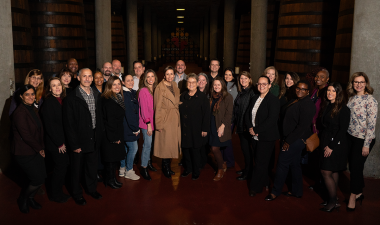As the Valley economy continues to reel from the pandemic, the Federal Reserve’s anticipated interest rate hikes in 2022, inflation and record-breaking oil prices cast a pall of uncertainty over the outlook.
The Federal Reserve’s primary focus to lower inflation by increasing interest rates could steer the regional economy toward a “hard landing.” Consumers can take preemptive actions by switching from adjustable to fixed-interest rates and refinancing home mortgages and auto loans now while interest rates are still relatively low.
That is the economic outlook for the coming year according to the biannual San Joaquin Valley Business Forecast produced by Gökçe Soydemir, the Foster Farms endowed professor of business economics at Stanislaus State.
Here are some of the report’s highlights:
EMPLOYMENT
Every employment category except financial activities and government jobs continued to recover in the Valley’s economy. Leisure and hospitality services was the fastest growing category of employment in 2021 with an average annual rate of 16.1 percent followed by trade, transportation and utilities employment, which grew by 6.63 percent. Retail services employment came in third with 6.30 percent growth in 2021.
REAL ESTATE
Home values soared in 2021, registering a staggering 16.83 percent average yearly increase — more than three times the long-term benchmark growth of 5.60 percent. Valley building permits increased 19.67 percent to catch up with inventory shortages. Freddie Mac 30-year rates began to increase with the first rate hike in March 2022.
PRICES AND INFLATION
High inflation is likely to prevail through summer 2022 mainly due to the ban on Russian oil exports. The average yearly inflation rate was 4.52 percent —more than twice the rate of the long-term benchmark rate of 2.45 percent. Wage-push inflation was another contributing factor causing high inflation. The rise in labor costs was passed on to consumers in the form of higher prices of consumer goods and services.
BANKING AND CAPITAL MARKETS
Valley community bank total deposits grew 26.70 percent in 2021 — more than twice the long-term benchmark. However, net loans and leases growth, 4.86 percent, was significantly less than the growth in total deposits. The low growth in net loans and leases is the first since the 2008 Great Recession. This imbalance between total deposits and net loans and leases growth is concerning. Valley bank non-accruals trended upward in 2021 creating another worry for the coming months. Community bank assets in default 30 to 89 days and assets in default 90-plus days average was higher in 2021 than 2020. Non-accruals are projected to rise faster in the coming months.
ABOUT THE REPORT AND THE AUTHOR
Gökçe Soydemir’s biannual Business Forecast provides projections for the Valley's labor market, regional housing conditions, prices and inflation, banks and other depositary institutions and capital markets. Soydemir and his team use a unique forecasting model that produces lower and upper statistical confidence bands, with results that are expected to fall within this range.
Soydemir joined Stanislaus State as the Foster Farms endowed professor of business economics in 2011. He brings strong expertise and experience in business analysis and forecasting and has published extensively on applied econometrics, regional economics, financial forecasting, market analysis and international finance.



